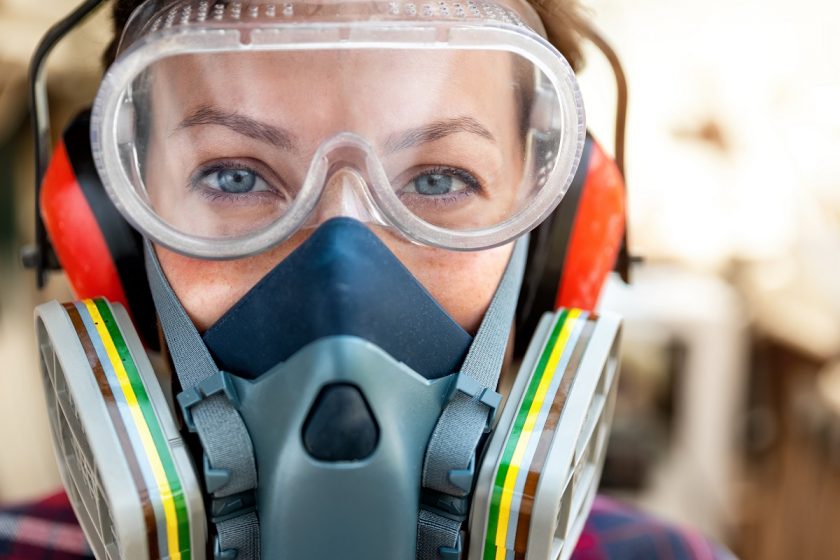No products in the cart.
Mask Care and Maintenance: How-to-Guide
Masks or respiratory protective equipment (RPE) are designed for the protection of the user and to help prevent the inhalation of hazardous materials such as asbestos which can cause serious long-term health conditions later in life. It is crucial that this equipment is not neglected as it can have severe impacts on protection levels, so proper cleaning and maintenance ensures the respiratory mask achieves optimum performance as well maximising its’ lifespan.
What is the importance of cleaning and maintaining respiratory masks?
Masks can be used for long periods of time, meaning the user is breathing into the half mask, full mask, or hood, creating condensation and sweat, which can lead to a build-up of bacteria. It can also highlight if your mask’s seal has broken in any way as there might be dust or material residue on the inside and if any of the parts have been damaged and require replacing.
Respiratory masks are generally used for long periods of time which means users are breathing into their full, half mask, or hoods
Benefits of regular mask cleaning:
How to clean a respiratory mask?
smantle the mask, removing any filters or pre-filters, covers from inhalation valves, any inhalation membranes, and harness. If you are cleaning the harness, it is important to note this might take a little longer to dry.
There are different ways of cleaning your mask, taking into consideration how frequently and how dirty it is.
Cleaning a respiratory mask:
- Clean a mask with specific disinfectant wipes. These are recommended for daily use and lightly soiled equipment. Using wipes does not necessarily provide a deep clean, and close attention should be paid to seals, valves, and any other nooks and crevices.
- Wash a respiratory mask with warm water, a soft brush, and a mild soap or suitable detergent. Rinse thoroughly and allow to air dry at room temperature. This provides a deeper clean for RPE that is heavily soiled. Air dry at room temperature and do not leave in direct sunlight.
In all circumstances, it is important to check the manufacturer’s recommendations or guidance.
It is also important to note that mask filters can’t be cleaned but do need to be checked on a regular basis to make sure they have not become blocked, which will impact how effective they will be. For more information on when to replace different mask filters, contact your local depot, where one of the team will be happy to help.
Inspecting your respirator or mask:
Once all the mask pieces are clean and have dried properly, and are ready to be reassembled, use this opportunity to inspect all the parts and replace any that look worn or damaged. Doing this is a crucial part of making sure a respiratory mask remains safe to use and provides maximum protection. Knowing what to look for should be something any mask user should be able to do and valuable training to provide teams with.
Best way to store your mask or respirator
After the respiratory mask has been cleaned and reassembled, it should be stored in a clean and dry place until it is going to be used again. Ideally, this should be in a storage bag or box keep, which will protect it from light, humidity, damage, or other chemicals.
Monthly Inspections of a Mask
Carrying out monthly inspections on respirators is highly recommended. This should consist of a visual inspection of the face piece and harness for wear and tear or damage that would impact the performance or level of protection the mask will provide.
It is important that anyone using a mask is able to spot key signs that might impact the masks performance. If you have any concerns, talk to our experienced team who will be able to help you further.
Respiratory Protective Equipment (RPE) Face Fit Testing
If there is dust residue on the internal areas of a respirator when removed, then it is important to check the filters, it is also worth ensuring the respirator still fits correctly. This is a key sign that the mask might not be providing maximum protection, and the wearer is at risk of inhaling potentially hazardous materials or particles.
The fit of a mask can be influenced by different factors including weight loss or gain. Bearing this in mind, it is important that individuals have a proper face fit test at regular intervals.
Cleaning and maintenance should be an essential part of a mask wearers’ routine, and something that should not be overlooked as the protection they provide is invaluable. Our team is always at hand if you have any questions about your respiratory protective equipment (RPE) or concerns about its’ condition. We also stock a wide range of respiratory protective equipment (RPE) and accessories should your team require new or replacement equipment. Contact your local branch.
